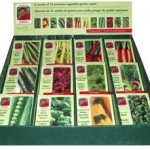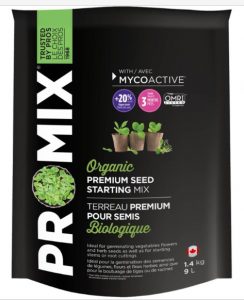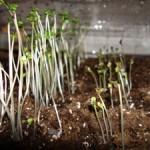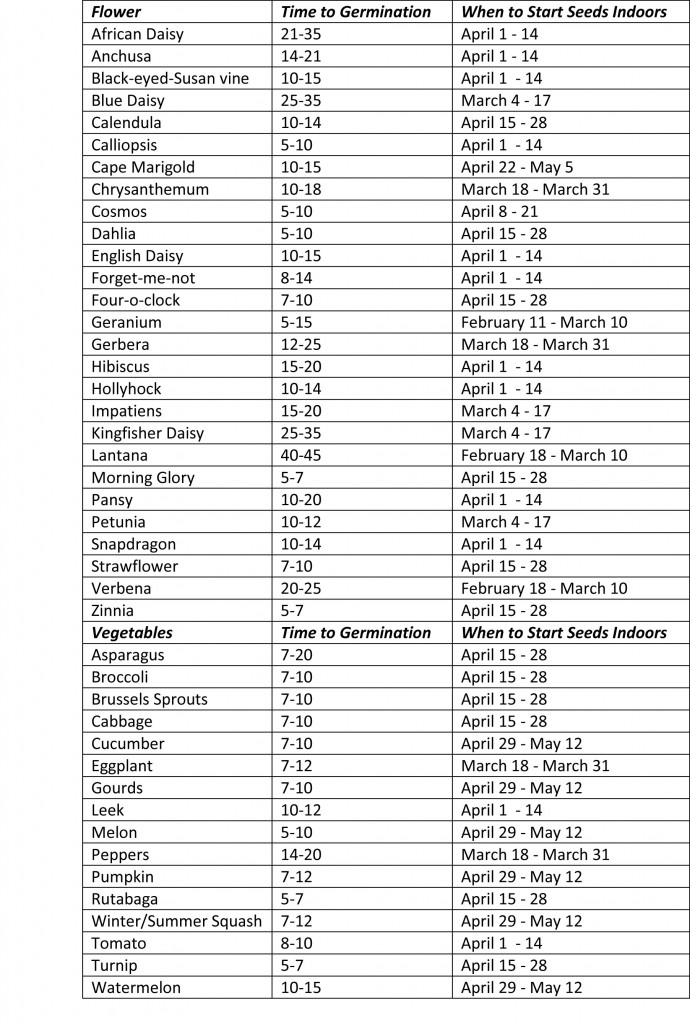Your Guide To Good Germination
We are fast approaching Canada’s indoor seed starting time. Our days are longer now (thank goodness!) and the sun doesn’t hang quite so low in the sky. Here are my top three tips for getting your seedlings off to a good start. These early days are important for the growth and development of your plants later on.
Tip 1: Choosing the Right Seeds
 Not all seeds are best started now (or soon). Actually, many of Canada’s native perennials prefer winter sowing or cold, moist stratification (more on that next week). Know what kind of seed you’re starting before you go throwing the seeds around willy-nilly. I’ve created a list that is a good reference but is, by all means, not the be-all and end-all. If you have something that’s not on this list, a quick internet search should help you out. Or, check the back of the seed pack. A good seed company will provide you with sowing information.
Not all seeds are best started now (or soon). Actually, many of Canada’s native perennials prefer winter sowing or cold, moist stratification (more on that next week). Know what kind of seed you’re starting before you go throwing the seeds around willy-nilly. I’ve created a list that is a good reference but is, by all means, not the be-all and end-all. If you have something that’s not on this list, a quick internet search should help you out. Or, check the back of the seed pack. A good seed company will provide you with sowing information.
Tip 2: Proper Soil
 Not all soil is equal when you’re talking about the germination of seeds. Starter soil is best for germination: it is light, not packed with too many nutrients, and holds water. Starter soils are usually soilless. That is, they contain varying combinations of vermiculite, perlite, and peat instead of actual soil.
Not all soil is equal when you’re talking about the germination of seeds. Starter soil is best for germination: it is light, not packed with too many nutrients, and holds water. Starter soils are usually soilless. That is, they contain varying combinations of vermiculite, perlite, and peat instead of actual soil.
Regular potting soil is actual soil: it is dense and contains the nutrition to support a plant later in life. Soil from outdoors is a risky move due to the potential for insects and disease moving indoors with it.
In real life, a seed would have to fight for its survival outdoors; however, we want to provide the best setting possible so the vast majority of our seeds germinate. Stick with the seed starting soil: there are a number of brands out there. I prefer Pro-Mix, but, of course, you will have your favourite brands, too.
Tip 3: Light vs Nutrition
 When light and nutrition don’t balance, you end up with leggy, scraggly plants. Plants will use up the nutrients from its seed and then those in the soil to stretch towards the sun. If the sunlight is too far from your plant, your plants get leggy.
When light and nutrition don’t balance, you end up with leggy, scraggly plants. Plants will use up the nutrients from its seed and then those in the soil to stretch towards the sun. If the sunlight is too far from your plant, your plants get leggy.
How do we fix this? Fake them out. If you don’t have a sunny south-facing window, try providing your plants with some fake light. Be careful, though: not all light is equal. Regular indoor lights don’t contain the necessary UV light that plants use to grow. You’ll need to get yourself a low-heat, full-spectrum bulb or some sort of light specially designed to promote leafy growth. I won’t get into too many details here but they are easy enough to find in stores.
When using an indoor light, be sure to keep it about 6 inches from the top of your plant (you will only need to turn it on once the green cotyledon has poked through the soil). Keeping the light close by, discourages leggy growth and you’ll end up with short, stocky plants that will do just fine outdoors once the weather comes around.
